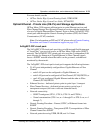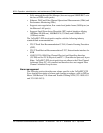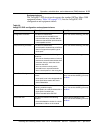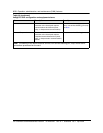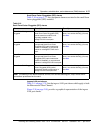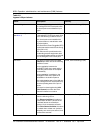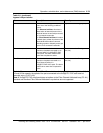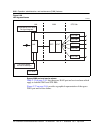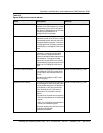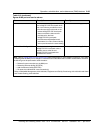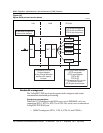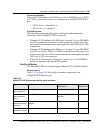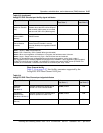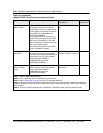
Operation, administration, and maintenance (OAM) features 2-81
Planning and Ordering Guide—Part 1 of 2 NTRN10AN Rel 12.1 Standard Iss 1 Apr 2004
Table 2-12
Egress WAN port and service alarms
Alarm Description Severity
STS Rx Loss of Multiframe This alarm is raised when the multiframe
indicator for an STS member of a virtually
concatenated group cannot be located.
This alarm is raised against an STS that
connects to the WAN port of a
2xGigE/FC-P2P circuit pack.
Critical, service affecting (C, SA)
STS Rx Loss of Sequence This alarm is raised when the received
sequence number of an STS in a virtually
concatenated group does not match the
expected sequence number. This alarm
is raised against an STS that connects to
the WAN port of a 2xGigE/FC-P2P circuit
pack.
Critical, service affecting (C, SA)
STS Rx Loss of Alignment This alarm is raised when the STS
members in a virtually concatenated
group cannot be aligned because of
excessive differential delay between the
STS members. This alarm is raised
against the slowest STS in the virtually
concatenated group that connects to the
WAN port of a 2xGigE/FC-P2P circuit
pack.
Critical, service affecting (C, SA)
Rx Loss of Frame Delineation This alarm is raised against the WAN port
of a 2xGigE/FC-P2P circuit pack when
the GFP layer cannot detect valid GFP
frames.
This alarm only applies to GFP-T and
GFP-F mapping
Critical, service affecting (C, SA)
Insufficient Link Capacity This alarm is raised against the WAN port
on the 2xGigE/FC-P2P circuit pack when
the bandwidth assigned to the WAN port
is insufficient to carry the provisioned
Fibre Channel service. This alarm is
applicable to full-rate Fibre Channel
service.
Full-rate Fibre Channel service requires:
• STS-24c of bandwidth for concatenated
signals
• STS1-19v or STS3c-6v of bandwidth for
virtually concatenated signals
This alarm applies only when the service
is FC100 or FICON with
SUBRATE=DISABLE.
Critical, service affecting (C, SA)



